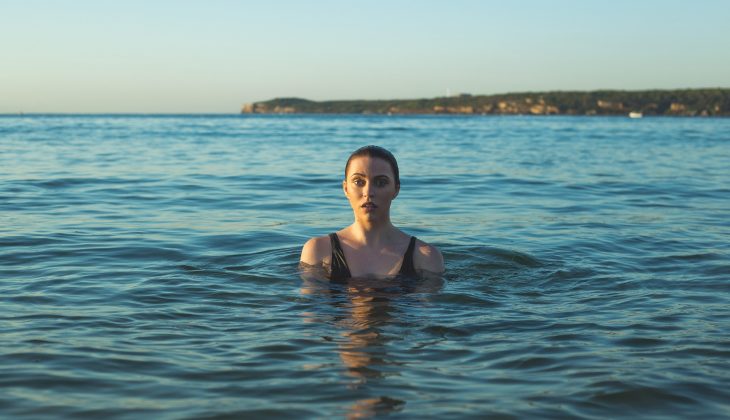In 2020, 58 people lost their lives because of water accidents; 80% of them drowned in inland waters. Even though the Rescue Board conducts various campaigns, trains young people, and gives advice on numerous information and safety days, the number of incidents of drowning is still quite high. According to the strategy of the Rescue Board, the number of drowning incidents in Estonia should be below 20 by the year 2025.
Accidents involving water continue to be a significant global health problem and a major cause of disability and death among children. In Estonia, the fact that many water accidents happen after consuming alcoholic beverages, especially among elderly people, is supported by statistics. Therefore, this spring’s water safety campaign by the Rescue Board is aimed at the elderly and things their loved ones can do to prevent accidents.
Why do accidents happen?
Water accidents usually occur when various mistakes and bad circumstances coincide. A closer look reveals that people seem to repeat the same mistakes and scenarios, so it is important to talk about the causes and ways in which water accidents can be avoided. First, we need to understand that children need adult supervision in any type of water body. It is the adult’s responsibility to enforce general rules of behaviour by the water and to set an example at an early stage. Hazards include a pond in the backyard, as well as water parks, inflatable toys, and poor swimming skills. Therefore, the keywords are safe behaviour in the water and safe swimming. So how best to ensure this?
Consider your swimming skills to make sure that you can safely enjoy being in the water. The way people assess their swimming skills is highly individual and incorrect assessment may lead to accidents. You can often hear people talking about how long they can hold their breath underwater or the distance they can swim in a swimming pool, for example. It is therefore important not to overestimate your swimming skills. Each body of water is different and doing well in warm and controlled pool water does not mean you can do the same in open water. Therefore, only swim in places that are intended for this purpose. The safest choice is a public beach, but if this is not possible, it is important to make sure that swimming is safe. Avoid places where water ‘falls’, i.e. natural waterfalls or man-made dams. In such places, the upstream parts are dangerous; the danger of being carried by the current and falling from a height without knowing what’s at the bottom; the risk of falling into a whirlpool from which a person cannot get out by themselves.
You should always carefully enter the water, not simply jump in. It is important to remember that you should not swim with a full stomach or when you are overheated.
The general rule is that swimming and alcohol do not mix. So always intervene when you see someone in the water who appears to be intoxicated. The problem is that the coordination of an intoxicated person is disturbed, as indicated by the way they walk. If a person decides to go for a swim while intoxicated, they may breathe in half water and half air, causing the throat to spasm. As a result, they suffocate and sink to the bottom.
Drowning can also be a secondary result that is actually preceded by a health problem. Elderly people in particular should consider their state of health. This applies equally to taking water from the pond at home and going fishing, for example.
Safe boating
In addition to the above, it is important to remember that a life jacket will save your life in the water! So it’s important to put on a life jacket, for example, when you go boating, and do it while you are still on land. Should the worst happen, and the boat capsizes, it would be quite difficult to get the life jacket on then, as you will be hampered by the shock, water density, and impaired coordination.
When talking about a life jacket, two things are important: firstly, it is a rescue device that has to keep the body afloat when it gets into the water, and another important aspect is that a life jacket must turn the person in the water onto their back. The reason we mention this is that boat rentals often also offer life jackets of another type that are not aimed at rescuing but simply providing safety to a certain extent. A life jacket is distinguished by a collar and a float that extends to the back, which is able to turn a person around in the water. A jacket must fit the person and, if the whole family goes boating, the adults should also wear a life jacket. Children often turn out to know more about safety than their parents and tell adults to also put a life jacket on. But if adults reply that they can swim well and don’t need it, they give very bad example and also endanger others in the boat in the event of an accident.
When going boating, you should remember not to overload the boat and dress according to the weather in addition to thinking about rescue equipment.
As the weather is sunny and the number of accidents is high, the Rescue Board would like to remind you once more:
● Don’t drink and swim! Alcohol intoxication is a major cause of drowning among men. One third of those who drowned in the summer of 2018 were drunk. Light intoxication and hangovers are also dangerous. When you consume alcohol, you get tired very fast and develop problems with reflexes and the cardiovascular system. Hypothermia may develop quickly and blood supply to the limbs may deteriorate fast.
● Keep an eye out! It is always safer to go swimming with a friend or family member so that you can keep an eye on each other and call for help, if needed. You should never allow children to go swimming alone, as they are more prone to accidents because they are not very good at perceiving danger.
● Always swim in a place intended for this! People often go swimming in the sea with high waves or a river with a rapid flow. Also, you may end up in a whirlpool or become entangled in underwater plants if you swim in an unfamiliar place. Many injuries occur due to jumping into water from places not intended for this purpose (e.g. bridges, breakwaters). Keep in mind that there may be underwater poles, rocks, stumps, etc. in places not intended for swimming. The bottom may also be contaminated with sharp and dangerous objects (e.g. glass containers). It is safest to swim at a public beach under the supervision of lifeguards.
● Swim near the shore and make sure that your feet always reach the bottom! Should you suddenly become tired or develop, for example, muscle cramps or health problems, swimming in shallow water will not pose a serious risk of drowning.
The article was compiled by Reili Kull, head of the prevention department of the Rescue Board’s northern rescue centre
The goal of the Rescue Board of creating a safe and secure living environment for the residents of Estonia can only be achieved with the help of everyone – everyone means residents, partners, local governments, state agencies, volunteers, and employees of the Rescue Board. Website www.rescue.ee.
Published in the youth information portal Teeviit in 2021.







